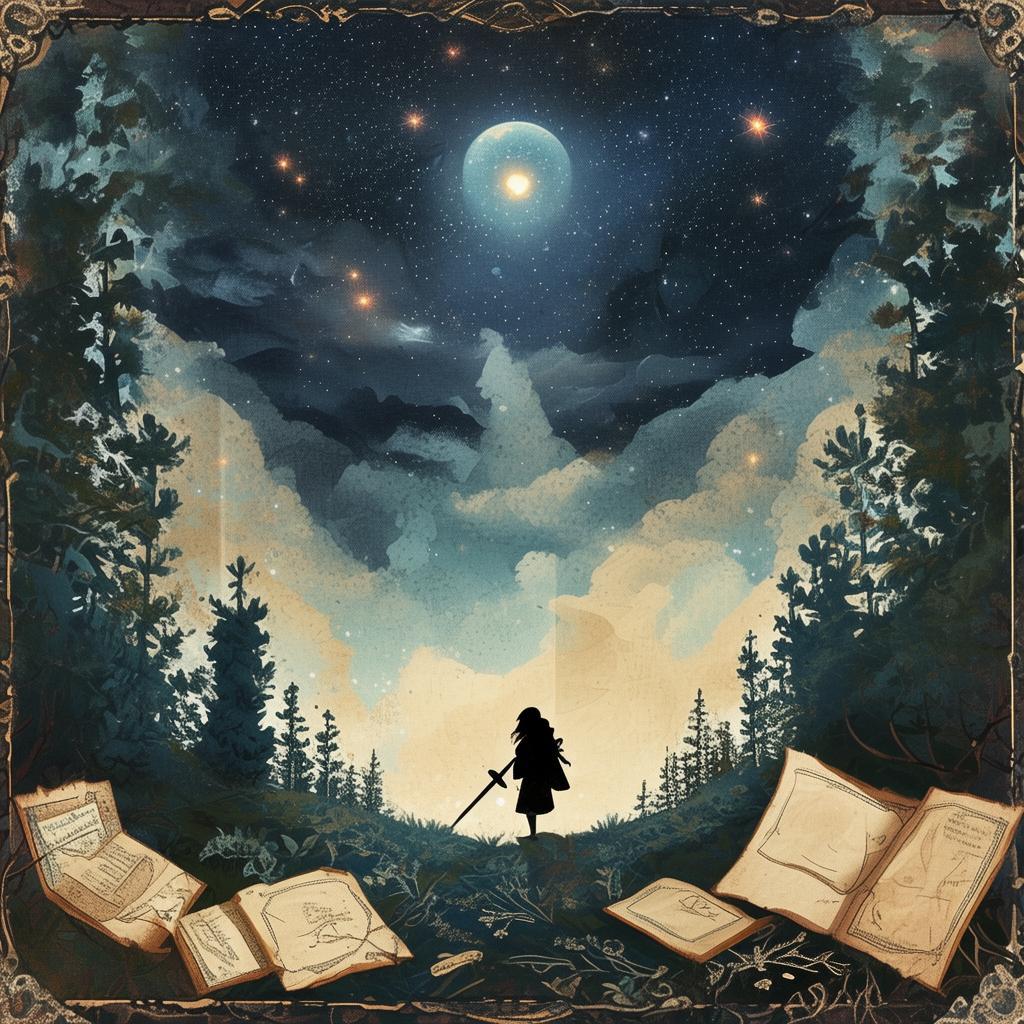Whispers of the Madman's Canvas
In the heart of Paris, amidst the bustling streets and the scent of freshly baked bread, there lived a young artist named Elara. Her world was a canvas of vibrant colors and intricate designs, but it was the works of Vincent van Gogh that called out to her with an almost haunting allure. Elara had always been fascinated by the gothic tragedy that seemed to seep from the brushstrokes of the Dutch master.
One rainy evening, as she wandered through the Louvre, Elara's eyes were drawn to a painting that seemed to pulse with an inner life of its own. It was "Starry Night," the swirling cosmos of the night sky, the swirling vortex of a mind lost in the depths of creativity and madness. Elara felt a strange pull, as if the painting was beckoning her to its depths.

As she gazed at the painting, she felt a sudden chill run down her spine. The canvas seemed to whisper to her, and in that whisper, she heard a voice, faint and yet so clear. "Elara, you must follow the trail of my sadness."
Puzzled, Elara shook her head, but the voice persisted. "There is a story hidden within my work, a story that must be told before my art fades into obscurity."
Determined to uncover the mystery, Elara began to research the life of van Gogh, delving into his letters and the stories of his friends. She discovered a man consumed by his art, driven to create with a passion that bordered on obsession. Yet, there was a sadness that seemed to seep from his paintings, a sadness that was as palpable as the air in the room.
Elara's journey led her to the small town of Arles, where van Gogh had once lived. The town was a shadow of its former glory, the houses crumbling, the streets silent. She visited the Yellow House, where van Gogh had painted "The Starry Night." Inside, the room was filled with the same sense of isolation that Elara had felt in the Louvre.
As she explored the town, Elara met a local artist, a man named Jacques, who shared her fascination with van Gogh's work. Jacques told her of a legend that spoke of a hidden painting, a painting that van Gogh had created in his final moments, a painting that held the key to understanding his madness and his genius.
Together, Elara and Jacques set out to find the hidden painting. They followed the clues left by van Gogh's friends, clues that seemed to lead them deeper into the town's dark past. They encountered strange dreams and eerie visions, as if the very walls of the town were trying to keep them away from the truth.
Finally, after days of searching, they found the painting. It was hidden behind a wall in an abandoned barn, its surface covered in dust and cobwebs. As Elara approached, she felt a strange sense of connection to the painting, as if it was calling to her.
She lifted the canvas and gasped. The painting was "The Sower of Hope," a stark contrast to the wild brushstrokes of "Starry Night." It depicted a figure planting seeds in a barren field, a symbol of hope amidst despair.
As she examined the painting, Elara felt a sense of clarity. The painting was a testament to van Gogh's belief in the power of hope, even in the darkest of times. It was a message of resilience, a reminder that even in the face of despair, there was always a chance for something beautiful to grow.
The discovery of "The Sower of Hope" changed Elara's life. She realized that art was not just a form of expression, but a way to connect with the souls of those who had come before her. She returned to Paris, determined to share the story of van Gogh and his hidden masterpiece.
In her studio, Elara began to create her own works, inspired by the gothic tragedy of van Gogh's life. Her paintings were filled with a sense of melancholy, yet they also conveyed a message of hope and resilience. People began to notice her work, drawn to the emotional depth and the haunting beauty of her art.
One evening, as she stood in front of her latest painting, "The Starry Night of Paris," she felt the same chill she had felt in the Louvre. She turned to see a figure standing in the doorway, a man with a familiar face.
"Elara," the man said, his voice soft yet firm, "your journey is not over. There is still much to be discovered."
Elara smiled, knowing that the world of art was vast and mysterious, filled with secrets waiting to be uncovered. She had found her calling, and with it, a new sense of purpose. The gothic tragedy of van Gogh's life had become her own, a story of sadness and hope, of artistic genius and the human spirit's indomitable will to create.
✨ Original Statement ✨
All articles published on this website (including but not limited to text, images, videos, and other content) are original or authorized for reposting and are protected by relevant laws. Without the explicit written permission of this website, no individual or organization may copy, modify, repost, or use the content for commercial purposes.
If you need to quote or cooperate, please contact this site for authorization. We reserve the right to pursue legal responsibility for any unauthorized use.
Hereby declared.









